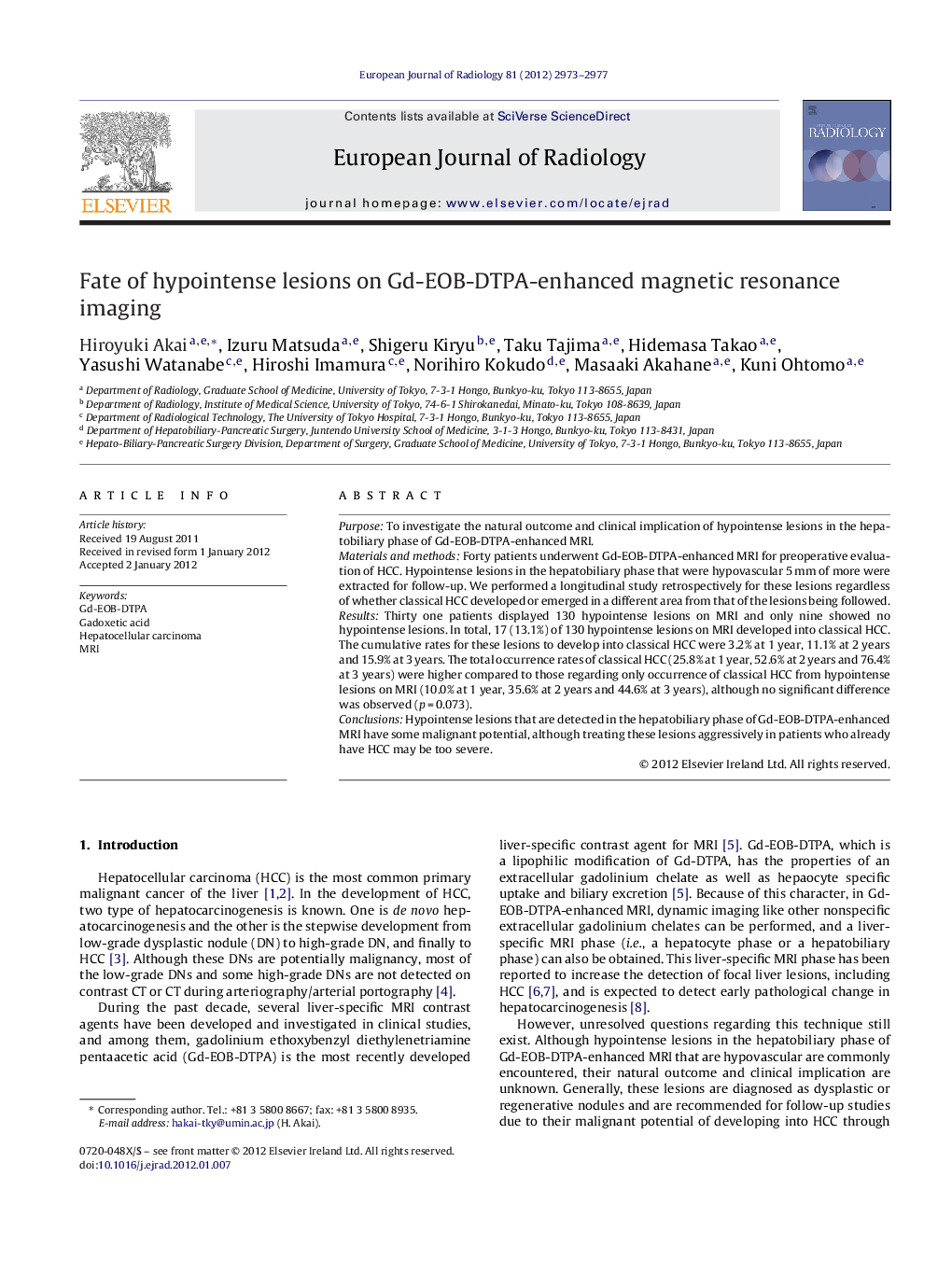| Article ID | Journal | Published Year | Pages | File Type |
|---|---|---|---|---|
| 6244173 | European Journal of Radiology | 2012 | 5 Pages |
PurposeTo investigate the natural outcome and clinical implication of hypointense lesions in the hepatobiliary phase of Gd-EOB-DTPA-enhanced MRI.Materials and methodsForty patients underwent Gd-EOB-DTPA-enhanced MRI for preoperative evaluation of HCC. Hypointense lesions in the hepatobiliary phase that were hypovascular 5 mm of more were extracted for follow-up. We performed a longitudinal study retrospectively for these lesions regardless of whether classical HCC developed or emerged in a different area from that of the lesions being followed.ResultsThirty one patients displayed 130 hypointense lesions on MRI and only nine showed no hypointense lesions. In total, 17 (13.1%) of 130 hypointense lesions on MRI developed into classical HCC. The cumulative rates for these lesions to develop into classical HCC were 3.2% at 1 year, 11.1% at 2 years and 15.9% at 3 years. The total occurrence rates of classical HCC (25.8% at 1 year, 52.6% at 2 years and 76.4% at 3 years) were higher compared to those regarding only occurrence of classical HCC from hypointense lesions on MRI (10.0% at 1 year, 35.6% at 2 years and 44.6% at 3 years), although no significant difference was observed (p = 0.073).ConclusionsHypointense lesions that are detected in the hepatobiliary phase of Gd-EOB-DTPA-enhanced MRI have some malignant potential, although treating these lesions aggressively in patients who already have HCC may be too severe.
